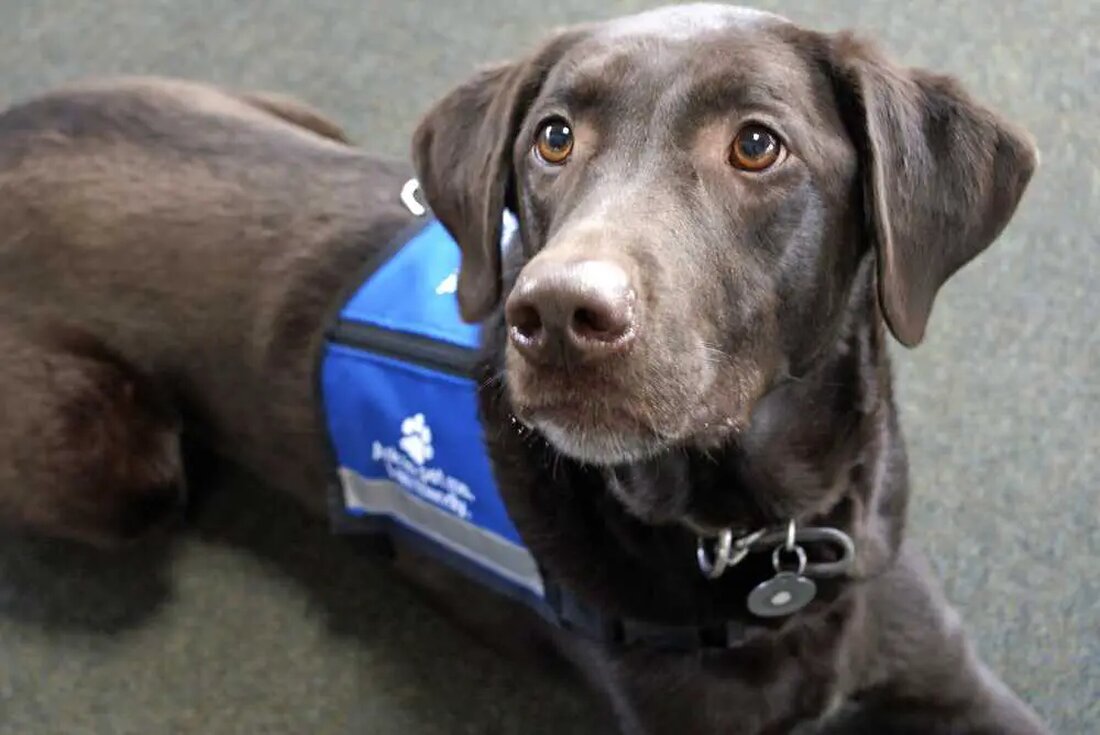How to Respond When You Encounter an Ownerless Service Dog: Five Essential Steps for Interaction and Support.
Understanding the Role of Service Dogs Service dogs are used as invaluable companions and helpers for people with disabilities, providing them with a level of independence and security. However, there may be situations in which you encounter a service dog without its owner. Knowing how to react in such a situation is not only an ethical obligation, but also crucial for the well-being of the dog and its owner. In this article, we'll discuss the steps you should follow if you encounter a service dog without its owner to help create a community of care, empathy, and support. Five essential steps for...

How to Respond When You Encounter an Ownerless Service Dog: Five Essential Steps for Interaction and Support.
Understanding the role of service dogs
Service dogs are used as invaluable companions and helpers for people with disabilities, providing them with a level of independence and security. However, there may be situations in which you encounter a service dog without its owner. Knowing how to react in such a situation is not only an ethical obligation, but also crucial for the well-being of the dog and its owner. In this article, we'll discuss the steps you should follow if you encounter a service dog without its owner to help create a community of care, empathy, and support.
Five essential steps for interaction
Step 1: Stay calm and proceed carefully
If a service dog approaches you without its owner, your first reaction might be panic. However, it is crucial to remain calm. Sudden movements or loud noises could startle the dog and further complicate the situation. Approach the dog slowly and use a gentle voice to signal your non-threatening intentions. These animals are trained to respond to commands and are usually well socialized.
Step 2: Verify the dog's identity
Before taking any further action, make sure the dog is actually a service dog. Most service dogs wear a harness or vest that identifies their role, often with an identification tag. The tag may also contain contact information for the owner or organization responsible for training the dog. If there is no identification, assume the dog needs help.
Step 3: Assess the dog's behavior
Pay close attention to the dog's behavior. Is he anxious, stressed or seemingly disoriented? A well-trained service dog would normally not approach strangers unless there is a good reason for it. If the dog appears to be leading you somewhere or shows signs of anxiety such as crying or pacing, it is likely that its owner needs help.
Step 4: Find the owner
Based on the dog's behavior, initiate the search for the owner. Scan your surroundings for signs of a person in distress, incapacitation, or injury. Look for mobility aids, personal items, or signs of a medical emergency. If you find the owner and he is in a precarious situation, ensure his immediate safety and call for medical help if necessary.
Step 5: Notify authorities if necessary
If you have followed the steps above and have not found the owner, it is important to contact the authorities. Contact local animal control, non-emergency law enforcement, or a nearby animal shelter. Provide comprehensive information about the dog, its location and observed behavior.
Why following these steps is important
In scenarios where a service dog approaches you unaccompanied, there is a high likelihood that its owner is in distress or potential danger. The steps outlined above prioritize the well-being of both the service dog and its owner. They form a chain of actions aimed at providing timely intervention to save lives and ensure the continued positive relationship between service dogs and their owners.
Their calm approach to this challenging situation reflects the broader need for community awareness and mutual aid. Through such acts of empathy and caring, we build a more inclusive and supportive society for everyone, including those who rely on service dogs for their well-being.
-End-

 Suche
Suche
 Mein Konto
Mein Konto
